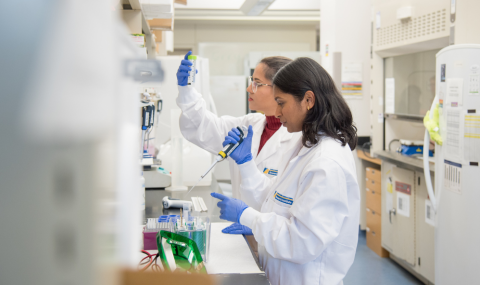Basics of Nutritional Support
People who are admitted to the intensive care unit have unique nutritional needs. Sometimes they will need more protein or other nutrients to help them heal from illness or injury. If there are imbalances in fluid or mineral salts, they will need to be corrected as well.
Often patients cannot eat normally and need alternative ways to get the nutrients their bodies need.
Enteral feeding
- Enteral feeding uses tubes placed into the stomach or small bowel to deliver nutrients and/or medications to patients who cannot eat. The staff check with X-rays to make sure the end of the tube is in the right place.
Nasogastric (NG) tube
- The NG tube is fed through the nose, down the back of the throat, and into the stomach. The NG tube is used to remove contents from the stomach. It can be used to give medications and temporarily feed patients as well.
Orogastric (OG) tube
- The OG tube is fed through the mouth, down the throat, and into the stomach. The OG tube is used if an NG tube cannot be placed and can be used to give nutrients and liquid medications in the same way.
Feeding tube past the pylorus
- A tube that is fed down through the stomach and into the small bowel. These feeding tubes are used for long term enteral feeding. Often the patient's stomach is not working well enough to move food and medications from the stomach into the small bowel. Different kinds of nutrients and medications can be given because it goes right to the place where most nutrients are absorbed into the blood.
Gastric tube (G-tube)
- A G-tube is placed through the skin into the stomach. A port is attached that can be sealed off when the G-tube is not being used. It is used to give the same kinds of nutrients and medicines as a nasogastric or orogastric tube.
Jejunal tube (J-tube)
- A J-tube is placed through the skin into the small bowel. A port is attached that can be capped off when the J-tube is not being used. It is used to give the same kinds of nutrients and medicines as an orojejunal tube placed through the mouth.
Parenteral feeding
- If a patient cannot take in nutrients by their gastrointestinal system, they will be provided with the nutrient they need directly into the bloodstream. TPN is the short form for total parenteral nutrition. It is preferred that TPN is given through a central line into a large blood vessel. A larger amount of the TPN fluid can be delivered through these lines.
Ileostomy and Colostomy
- These surgeries make a passage between the bowels and the outside of the body. The passage is fitted with a sealed bag to hold intestinal contents. These may be used if the bowel below the passage is damaged.



